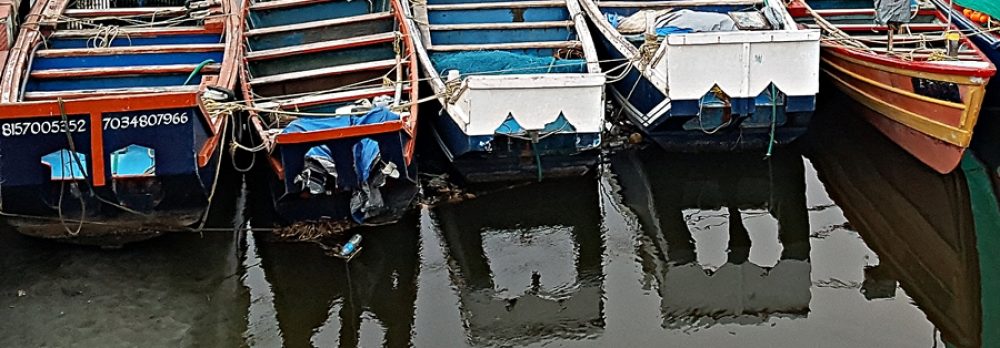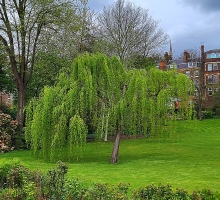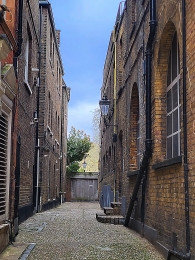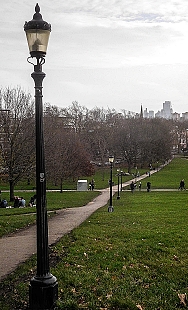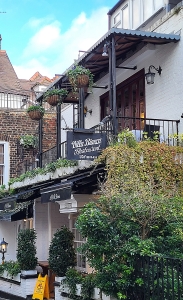GAINSBOROUGH GARDENS IS a cul-de-sac that leads southeast from Hampstead’s Well Walk, not far from one of the former homes of the artist John Constable. Houses are arranged around an attractive sloping oval garden, which was once part of the grounds of Hampstead’s once famous, now defunct, spa water centre and resort – the lost since demolished Long Room, which I have described this in my book “Beneath a Wide Sky: Hampstead and its Environs” as follows:
“These extensive premises were demolished in 1882 to make way for an estate of residential buildings. The former Pump Room and Assembly Room occupied a plot that is bounded by Well Walk, East Heath Road, and Gainsborough Gardens. Present day Gainsborough Gardens runs around an oval open space, which is shown as a pond in the gardens of the former Pump Rooms on an 1866 map. The pond was later filled in.
At the corner of Gainsborough Gardens and Well Walk, there is a tall building with attractive neo gothic windows. This was built in about 1704. Next to this house, but separated from it by Gainsborough Gardens, stands Wellside, a house built in 1892 on the site of the Pump Room.”
Yesterday, the 10th of April 2024, we visited Gainsborough Gardens with a friend of ours who introduced us to the friendly and highly informative couple, Adrian and Lynn, who look after the common garden within the oval. They had been the gardeners employed by the renowned pianist Katharina Wolpe (1931-2013), who had taken a great interest in the planting and planning of the oval garden. She had lived in Wellside, the house mentioned above. The gardeners told us that when she died, according to her wishes, she had bequeathed the plants in her garden to them, and they have since planted many of them in the oval garden.
Another famous person resided in Gainsborough Gardens. We were informed. That the author John le Carré (1931-2020) had lived in a house on the southwest part of the oval. As yet, there is no commemorative plaque for either him or Katharina Wolpe. According to Wikipedia, other notable residents of the Gardens included:
“ The family of songwriter Gary Osborne … The women’s suffrage campaigner Elizabeth Knight … The historian Bernard M. Allen … The Labour MP Arthur Greenwood … The former Governor of Northern Nigeria, George Sinclair Browne … Archibald Chisholm, the oil executive and former editor of the Financial Times … CE Maurice, who helped preserve Parliament Hill Fields and limit the expansion of construction onto nearby Hampstead Heath.”
Gainsborough Gardens, despite being a private ‘road’, is freely open to the public, and its centrally located garden is a delight to see.
[My book about Hampstead is available as a paperback and Kindle from Amazon:
https://www.amazon.co.uk/BENEATH-WIDE-SKY-HAMPSTEAD-ENVIRONS/dp/B09R2WRK92 ]
